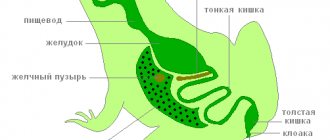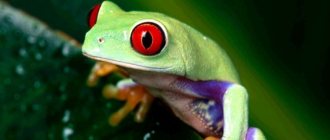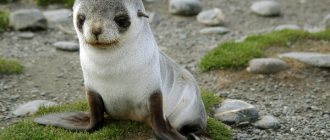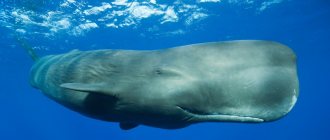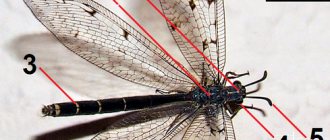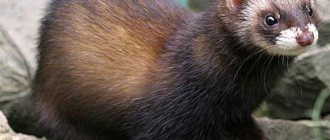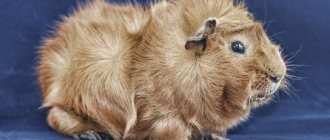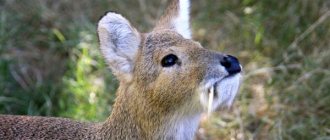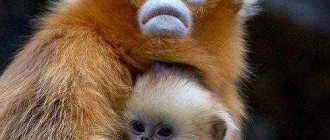Our planet is home to a huge variety of animals, so many of us are not even aware of the existence of some of them. Did you know that there are creatures in the world that look like slippery worms and poisonous snakes at the same time? They are called caecilians (Caeciliidae) and live in the soils of tropical regions of Africa, Asia and America. Since they lead an underground lifestyle, scientists know very little about them, but research work is constantly being carried out. For example, recently biologists from Brazil managed to find out that the caecilian’s mouth contains many poisonous teeth. There is an assumption that these creatures are the only amphibians that secrete poison not only with their skin, but with their teeth. So what is it that if you dig up these creatures and touch them, the person will die?
Worms look pretty weird, don't they?
What are they?
Like other amphibians, all legless amphibians are vertebrates. They lead a predominantly underground lifestyle, so finding them is quite difficult. Science knows about 200 species of caecilians - this is much less than other orders of amphibians.
Legless animals already existed in the Jurassic period, that is, about 200 million years ago. The earliest representatives belonged to the genus Eocaecilia. They lived in the US state of Arizona. They had short limbs and well-developed eye sockets and tails.
Modern representatives of the order of legless amphibians have no legs, and their vision is very poor - animals perceive only light and darkness, without distinguishing between surrounding objects. They do not have a tail as such, or it is weakly expressed. Outwardly, they are very similar to worms, but are more complex creatures. Caecilians are superior to their primitive “doubles” in at least an advanced nervous system and a developed brain. Some individuals even have developed parental behavior.
Content
- 1 Etymology
- 2 History of discovery and study
- 3 Morphology 3.1 Dimensions
- 3.2 Skeleton
- 3.3 Leather
- 3.4 Sense organs
- 3.5 Respiratory system
- 3.6 Nervous system
- 3.7 Circulatory system and lymphatic system
- 3.8 Reproductive system
- 5.1 Metamorphosis
Appearance and structure
All caecilians have an elongated body, devoid of any limbs, with a very reduced tail. The transition from the head to the body is almost imperceptible, and it is not easy to immediately determine where the front part of legless amphibians is and where the back part is. But in the structure of the skeleton of these animals, the skull, thoracic, lumbar, cervical and caudal sections stand out. The last two sections have only one vertebra, and the trunk section has about a hundred.
The sizes of caecilians vary greatly and can range from 10 centimeters to a meter. Their integument is represented by smooth skin without ridges and other growths. Under their skin they have small horny scales, apparently left over from their ancestors. The color of most species is dark, gray-black or brown. Some have brighter colors and may be decorated with stripes or spots.
Due to living underground, they lost the ability to see and hear well, but they developed an excellent sense of smell and touch, as well as sensitivity to vibrations. Their eyes are covered with a thin layer of skin, protecting them from soil and small particles in it. They have nostrils for smell, and as an organ of touch they use small retractable tentacles located between the nostrils and eyes. Animals breathe using the skin, mucous membranes of the mouth and the right lung; the left lung is underdeveloped, like in snakes. The species Atretochoana eiselti has no lungs at all.
Lifestyle
Caecilians prefer to spend most of their lives underground. This is due to both the lack of hearing and the rudiments of the eyes, which are not useful. With their heads, like a battering ram, they make their way through the soil, and their body, covered with mucus, glides well in the passages.
Of course, this is done to search for food. Worms eat everything small and living that comes across their teeth, which radically distinguishes them from worms. It is also worth mentioning the presence of poisonous glands, which not only protect against ill-wishers, but also help immobilize the victim before a meal.
Habitats
The secretive lifestyle of legless caecilians makes them difficult to study. Even species discovered by science have not been fully explored. And all the information that exists today in various sources is based on only a small part of the research being conducted.
At the moment, the tropical and subtropical zones of the planet are considered to be the distribution area of caecilians. They are known to live in most of South America, Central America, the extreme west and extreme east of equatorial Africa, Southeast Asia and the western coast of Hindustan. The distribution of legless animals can be seen in more detail on the map (photo below).
Caecilians live close to bodies of water, and some species live right in them, never getting out onto land. Researchers have often found legless creatures in the Amazon, Orinoco and other slow-moving rivers. Most species live in moist soil and lower levels of the forest floor, without venturing too far. But they spend only part of their time on land, hunting and sometimes breeding in the water.
Notes
- Ananyeva et al., 1988, p. 12.
- ↑ 123
Amphibian Species of the World 6.0, an Online Reference: Gymnophiona Müller, 1832. American Museum of Natural History, New York, USA. Retrieved February 13, 2015. - Gymnophiona (English) information on the Paleobiology Database website. (Accessed: May 14, 2020).
- Latreille PA
Familles naturelles du règne animal: exposées succinctement et dans un ordre analytique, avec lindication de leurs genres. - Baillière, 1825. - P. 103. - 590 p. - Gymnophiona (English). Amphibians of the World 6.0, an Online Reference
. Date accessed: May 24, 2022. - ↑ 12
Exbrayat, 2006, p. 2. - Exbrayat, 2006, p. 3.
- ↑ 1 2 3 4 5 William E. Duellman.
Gymnophiona (English).
Encyclopædia Britannica
. Encyclopedia Britannica (20 February 2015). Date accessed: May 24, 2022. - Skeleton of amphibians (undefined)
.
Foxford
. foxford.ru. Date accessed: May 21, 2022. - V. N. Tonkov.
Textbook of normal human anatomy. — Ripol Classic, 2013-04. — P. 550. — 783 p. — ISBN 978-5-458-63286-7. - M. S. Gilyarov.
Biological encyclopedic dictionary. - Ripol Classic, 1989. - P. 320. - 895 p. — ISBN 978-5-458-25596-7. - ↑ 1 2 Rastogi RK
Reproductive Biology and Phylogeny of Gymnophiona (Caecilians). Jean-Marie Exbrayat, editor. (English) // Integrative and Comparative Biology. — 2007. — June 1 (vol. 47, no. 5). - P. 789-790. — ISSN 1540-7063. - doi:10.1093/icb/icm009. [] - Review of amphibian orders: Legless (undefined)
. biocpm.ru. Date accessed: May 21, 2022. - Igor Shilov.
Organism and environment. Physiological ecology. Textbook for universities. — Litres, 2020-02-09. - P. 61. - 181 p. — ISBN 978-5-04-232245-7. - Wake Marvalee H.
Fetal adaptations for viviparity in amphibians (English) // Journal of Morphology. — 2014. — March 19 (vol. 276, no. 8). — P. 941—960. — ISSN 0362-2525. - doi:10.1002/jmor.20271. [] - Exbrayat, 2006, p. 18.
- Jenkins Parish A., Walsh Denis M.
An Early Jurassic caecilian with limbs (English) // Nature. - 1993. - September (vol. 365, no. 6443). - P. 246-250. — ISSN 0028-0836. - doi:10.1038/365246a0. [] - Anderson JS, Reisz RR, Scott D., Fröbisch NB, Sumida SS
A stem batrachian from the Early Permian of Texas and the origin of frogs and salamanders. (English) // Nature. - 2008. - May 22 (vol. 453, no. 7194). - P. 515-518. - doi:10.1038/nature06865. — PMID 18497824. [] - Huttenlocker Adam K., Pardo Jason D., Small Bryan J., Anderson Jason S.
Cranial morphology of recumbirostrans (Lepospondyli) from the Permian of Kansas and Nebraska, and early morphological evolution inferred by micro-computed tomography (English) // Journal of Vertebrate Paleontology. — 2013. — May (vol. 33, no. 3). — P. 540—552. — ISSN 0272-4634. - doi:10.1080/02724634.2013.728998. [] - San Mauro Diego.
A multilocus timescale for the origin of extant amphibians // Molecular Phylogenetics and Evolution. - 2010. - August (vol. 56, no. 2). — P. 554—561. — ISSN 1055-7903. - doi:10.1016/j.ympev.2010.04.019. [] - ↑ 1 2 3 Pardo Jason D., Small Bryan J., Huttenlocker Adam K.
Stem caecilian from the Triassic of Colorado sheds light on the origins of Lissamphibia (English) // Proceedings of the National Academy of Sciences. — 2022. — June 19 (vol. 114, no. 27). — P. E5389—E5395. — ISSN 0027-8424. - doi:10.1073/pnas.1706752114. [] - Wilkinson, M.; San Mauro, D.; Sherratt, E.; Gower, D. J. (2011). A nine-family classification of caecilians (Amphibia: Gymnophiona). Zootaxa 2874
: 41–64. - Kamei, R. G.; San Mauro, D.; Gower, D. J.; Van Bocxlaer, I.; Sherratt, E.; Thomas, A.; Babu, S.; Bossuyt, F.; Wilkinson, M.; Biju, S. D. (2012). "Discovery of a new family of amphibians from Northeast India with ancient links to Africa". Proc.
R. Soc. B. doi:10.1098/rspb.2012.0150. - "New amphibian family find for India". BBC News. February 22, 2012.
- "New amphibian family found in India". CBC News. 21 February 2012.
- Eocaecilia
(English) information on the Paleobiology Database website. (Accessed: May 1, 2017). - Rubricacaecilia
(English) information on the Paleobiology Database website. (Accessed: May 1, 2017). - San Mauro Diego, Gower David J., Müller Hendrik, Loader Simon P., Zardoya Rafael, Nussbaum Ronald A., Wilkinson Mark.
Life-history evolution and mitogenomic phylogeny of caecilian amphibians (English) // Molecular Phylogenetics and Evolution. — 2014. — April (vol. 73). - P. 177-189. — ISSN 1055-7903. - doi:10.1016/j.ympev.2014.01.009. [] - Gutierre Robson Campos, Jared Carlos, Antoniazzi Marta Maria, Coppi Antonio Augusto, Egami Mizue Imoto.
Melanomacrophage functions in the liver of the caecilian Siphonops annulatus (English) // Journal of Anatomy. — 2022. — 4 December (vol. 232, no. 3). - P. 497-508. — ISSN 0021-8782. - doi:10.1111/joa.12757. []
Nutrition
Legless amphibians are rather slow and cannot be serious predators. However, they are not vegetarians, eating insects, earthworms and other invertebrates. The remains of termites and unknown plant fibers were found in the stomachs of some individuals.
Animals find food by digging holes in the wet soil. Their skin is covered with ducts through which mucus is secreted. It helps them move, but also contains poison to paralyze prey and at the same time scare away enemies. They grab the poisoned victim with their teeth and swallow it with the help of mucus in their mouth.
Large individuals feed not only on small animals, but can occasionally eat lizards and small snakes. Families of caecilians living in water eat mollusks, small fish, tadpoles, and aquatic plants.
Literature
- Legless amphibians // Encyclopedic Dictionary of Brockhaus and Efron: in 86 volumes (82 volumes and 4 additional). - St. Petersburg, 1890-1907.
- Werner Himstedt: Die Blindwühlen
. — ISBN 3-89432-434-1. - Ananyeva N. B., Borkin L. Ya., Darevsky I. S., Orlov N. L.
Five-language dictionary of animal names. Amphibians and reptiles. Latin, Russian, English, German, French. / under the general editorship of academician. V. E. Sokolova. - M.: Rus. lang., 1988. - 560 p. — 10,500 copies. — ISBN 5-200-00232-X. - Exbrayat, Jean-Marie.
Reproductive biology and phylogeny of Gymnophiona: Caecilians. — Enfield, (NH): Science Publishers, 2006. — 1 online resource (xii, 395 pages) p. — ISBN 978-1-57808-551-4, 1-57808-551-9, 978-1-4822-8014-2, 1-4822-8014-0. - William E. Duellman.
Gymnophiona (English).
Encyclopædia Britannica
. Encyclopedia Britannica (20 February 2015). Date accessed: May 24, 2022. - Brem A.
Legless_amphibians (Apoda) // Animal life. - Directmedia, 2013. - pp. 383-388. — 421 p. — ISBN 978-5-9989-0638-1. - O'Reilly JC
Feeding in Caecilians // Feeding: Form, Function and Evolution in Tetrapod Vertebrates / Kurt Schwenk. — Elsevier, 2000-08-03. — P. 149—166. — 555 p. — ISBN 978-0-08-053163-2.
Reproduction
All legless amphibians are dioecious creatures and reproduce by injecting sperm into the female's body. A third of species lay eggs. To do this, they dig a hole in a safe and necessarily moist place, and then wrap themselves around the masonry, lubricating it with mucus and waiting for hatching. One female gives birth to 10-40 cubs at a time.
Most caecilians reproduce by viviparity. The eggs hatch into the young while still inside the mother's body, feeding on the epithelium of her oviduct. After some time, they come out, being quite mature, but still immature individuals.
The development of legless larvae can occur both in water and on land, depending on the species. Those who grow up in rivers initially have gills. In those that develop on land, the gills disappear at the egg stage.
[edit] Description
In appearance, legless amphibians are more likely to resemble snakes or large worms and are not at all similar to frogs or even salamanders.
The body of legless amphibians is worm-like and lacks legs. The resemblance to worms is enhanced by the numerous (up to 400) ring-shaped interceptions of the body. The tail is so short that it appears to be non-existent, and the round anal opening is located almost at the end of the body.
The length of the worm-like body can be from 30 to 120 cm.
Skin covering
The skin is completely bare, although in some species it contains small fish-like scales. The skin is rich in glands and during the life of the animal is always covered with sticky mucus.
Sense organs
Legless amphibians do not have keen eyes or sensitive ears due to their predominantly underground lifestyle. Therefore, they “lost” their eardrum and middle ear. Their eyes are underdeveloped and hidden under the skin, and some are even overgrown with bone.
But caecilians have a highly developed sense of smell and touch.
Eye tentacles
Worm with protruding tentacles
In front of each eye there is a small hole through which a tentacle, equipped with a special nerve, extends and retracts. At the depth of each hole, two channels open, communicating with a large tentacle gland. Due to strong muscle contraction, the tentacle is retracted and the channels are open. The secretions accumulated in the gland may flow out, or even splash out. It is possible that the retracting tentacle puts further pressure on the gland and thereby contributes to a stronger release of its contents, which in some cases have toxic properties.
Internal structure
The internal structure is generally the same as that of other representatives of the amphibian class, with the exception of some changes due to the underground lifestyle.
→
All internal organs of legless amphibians are highly elongated in length, corresponding to the serpentine shape of the body. Primitive morphological characters are small bone scales in the skin of some caecilians.
The vertebrae of legless amphibians are biconcave, their number reaching 300 in some species. A notochord is preserved between the vertebrae. The ribs are rudimentary. There are no limb belts.
Another distinctive feature of the bream is the appearance during embryonic development of seven rather than six gill slits. Seven slits are found only in some cartilaginous fish.
The jaws are armed with hollow, slightly backward-pointing teeth. There are also palatal teeth arranged in a horseshoe shape. The tongue is completely motionless, as it grows with its entire lower surface to the bottom of the mouth.
The structure of the skull is very peculiar: the maxillary bones cover the eye socket, and the temporal bones cover the temporal socket, so that from the outside it seems that the skull is formed by one shield-like bone plate. The brain is much more developed than all other amphibians; the cerebral hemispheres are especially large. The external nasal openings are located on the sides of the head or at the front end of it, and the internal nasal openings are located on the roof of the mouth.
Top articles: Isogamy
The right lung is highly developed, the left is only a few millimeters long. The elongated stomach is not clearly demarcated from the esophagus. The liver is sometimes simple, elongated, or consists of a large number of lobes shaped like round plates adjacent to each other. The intestine ends in a highly developed cloaca, into which the ureters, coming from very long ribbon-shaped kidneys of a very simple structure, the bladder and genitals open.
Genitals
The ovaries are in the form of long ribbons, with oviducts stretching along them. The testes consist of many individual lobules lying on each side in the form of a longitudinal row; the fertilization organs are highly developed.
In males, the cloaca can evert out, forming an unpaired organ of copulation. The form of such a copulative (copulative) apparatus is extremely species-specific. A number of African genera even have spines on the cloaca. And some aquatic species, in addition, also have a specialized grasping organ in the anal region.
In the cloaca of males, paired glands were found that play a role in stimulating reproduction, which, in the absence of sexual dimorphism, can be an important factor in successful mating of caecilians.
Family of true caecilians
This family is one of the most extensive in the entire order. Many of its representatives live in Central and South America. These include the olive caecilian, which lives on the Pacific coast, the Linnaeus caecilian, common in Brazil, Suriname, Peru, Ecuador, Colombia, as well as the Marcus caecilian, which is endemic to Bolivia.
The family includes from 42 to 96 legless species, depending on the classification. The largest species of true caecilians and the largest representative of the order in the world is Thompson's caecilian. It reaches a length of 120 centimeters.
Classification of the class Amphibians
The main feature of the classification of amphibians is the difference in external structure between individual representatives of the class. All species are divided into three orders, which you can get acquainted with using the diagram.
- Legless order – 206 species. Representatives of the order - caecilians - are distributed in small numbers in the tropical parts of Africa, Asia and especially America. The legless order is considered the most primitive among amphibians.
Characterized by the complete absence of limbs and bare skin, the body shape is similar to an earthworm. The small head lacks developed eyes or they are so covered with skin that they are unable to see.
A representative of this order is the Ceylon caecilian, living in Hindustan, Indochina, Ceylon and the large Sunda Islands.
Ceylon caecilian
This animal reaches 0.5 meters in length and lives underground near the wet banks of small bodies of water. It crawls quickly, wriggling. Feeds on small animals.
The female lays 10-20 large eggs. She protects her offspring by wrapping her long body around the laid eggs.
The Ceylon caecilian protects its offspring
The eggs develop into larvae that move into the water. It is interesting to note that adult caecilians never live in water.
- Order Caudates - about 700 species. Amphibians of the caudate order include aquatic inhabitants or those living in damp places. When young and adult, they have an elongated body with short limbs, which ends in a well-developed tail.
Representatives of the caudate order include newts, salamanders, and proteas.
Among the amphibians of our fauna, newts are especially well known. The common newt has well-developed sexual dimorphism - the external difference between the male and female. In the picture, an animal with a high jagged crest catches your eye - this is a male, but the female does not have such a crest.
Male and female common newt
The well-known fire salamander, widespread in Western Europe, also belongs to the tailed amphibians. The skin glands of the salamander secrete a caustic, poisonous juice that protects this amphibian from enemies.
Fire salamander
Typically, various predators do not touch the salamander. Its poisons can cause death, but it is not dangerous to humans.
In the darkness of caves in North America and Europe lives a wonderful amphibian - Proteus. The body of this animal is elongated, the eyes are hidden under the skin, and there are three bundles of external branched gills on the sides of the head. The limbs are very small and weak.
American protea
- Order Anurans - more than 7000 species. Representatives of the order of tailless amphibians are distributed throughout the globe. Animals of the order Tailless differ from other amphibians in a number of characteristics:
- Adults do not have a tail;
- Two pairs of limbs extend from the body;
- The hind (jumping) limbs are longer than the forelimbs;
- Development is indirect with transformation;
- The larvae - tadpoles - at certain stages have external gills and live in water.
Among the order of anurans, the most famous animals are frogs, toads, tree frogs, toads, and spadefoots.
Let's get acquainted with the most interesting species. Among frogs, the South American frog, Rhinoderma Darwin, is of exceptional interest. A small, motley-colored animal, distinguished by its pronounced care for its offspring. The male carries the fertilized eggs in the throat sac. The cubs remain there until the end of their transformation. At the end of the sexual period, the male becomes completely exhausted, but by the next season he regains his strength.
Rhinoderma Darwin
The most common species in our fauna are the green water frog, known for its loud concerts, and the grass frog, distinguished by its brownish color.
grass frog
The gray and green toads are best known in Russia. On spring nights you can hear the beautiful rattling trills produced by green toads during the spawning period. The rest of the time they are true land animals.
green toad
Many of you have probably heard the belief that if you pick up a toad, its secretions will cause warts to form on the skin. Indeed, the skin secretions of toads are caustic and can cause irritation, but have nothing to do with warts.
Many amphibians are in danger of extinction. They are very sensitive to environmental pollution, changes in habitat, and of course, humans play a significant role. In this regard, many species are listed in the Red Book and are subject to protection. There are species that we will no longer see. For example, the orange toad is now considered extinct.
Ringed caecilians
These legless creatures live exclusively in South America, in areas east of the Andes. They are found in Brazil, Argentina, Venezuela, Suriname, Paraguay, Peru and Ecuador.
These creatures are not famous for their large sizes and reach a length of only 40-50 centimeters. The body of annelid caecilians is noticeably divided by transverse rings. Their larvae are equipped with 44 small teeth, with which they eat the top layer of the mother's skin. After eating everything in a matter of minutes, they wait about three days for the skin to grow back. The phenomenon is called “maternal dermatophagy” and it lasts until the babies grow up and are able to feed on their own.
Blind worker
A “strange” frog that was not noticed for a long time - it was discovered only in 2003. This is due to the fact that the amphibian spends most of its time leading a “reclusive” life, hiding in holes and pits.
We invite you to familiarize yourself with the age at which dogs grow: stages of physiological development
In appearance, it does not look like a frog - the blind worker has a very small head with a slightly pointed muzzle, and the body is large and looks like a shapeless mass of iron.
The animal is no more than 9 cm in length; in just a couple of minutes, the frog is able to dig a hole 3.7 m deep thanks to its hind and front legs. The frog very rarely crawls out of its hiding place, since it sees almost nothing.
Fish snakes
Fish snakes are another large family of legless snakes, including about 40 species. All of them live exclusively in Asia. The animals are widespread in the Malay Archipelago, Thailand, India, China and Malaysia. Among them there is an endemic with a very narrow range - the Ceylon fish snake, which lives only in the southern part of the island of the same name.
The body of such an individual grows to a maximum of 50 centimeters and is covered with small scales. They are distinguished from other representatives of caecilians by the presence of a short but noticeable tail, as well as adductor muscles in the jaw.
Fish snakes live near the banks of rivers and other bodies of water. After hatching from eggs, their larvae develop for a long time in water. It is noteworthy that adult individuals live only on land and can die if they fall into a body of water.
Order of tailed amphibians
Science knows about 350 species of tailed amphibians. These animals are similar in appearance to lizards, only the skin is soft and completely devoid of scales. Tailed amphibians include newts and salamanders. These animals have an elongated spindle-shaped body, which imperceptibly turns into a long tail. Curving the tail left and right helps it move through the water. On land, amphibians move with the help of two pairs of underdeveloped limbs. The toes may be webbed and lack claws.
Sirens have only forelimbs (Fig. 4).
Rice. 4. Siren
Amphibians that live constantly in water breathe through gills. There is a tongue in the mouth, its shape is varied. There are small teeth. Many tailed animals have the ability to grow a new one if they lose a tail or leg. Amphibians do not know how to chew; they swallow food whole. Amphibians grab everything that moves and do not take stationary food that is completely edible. Tailless amphibians feed on insects, grabbing them in motion using a long sticky tongue. Tailed animals feed on worms and arthropods.
Legless amphibians find food by touch or use their sense of smell. They feed on insect larvae and worms.
The Siberian salamander is one of the few amphibians that is not afraid to live in permafrost conditions (Fig. 5).
Rice. 5. Siberian salamander
The most well-known tailed amphibian is the newt (Fig. 6). They look like little dragons. Newts love to hunt at night.
Rice. 6. Triton
The fire salamander is famous for its bright color (Fig. 7). It is interesting that the shape, size, and pattern on the body of salamanders are unique to each individual.
Rice. 7. Salamander
The axolotl looks like an adult larva (Fig. 8).
Rice. 8. Axolotl
Species composition
- Genus Boulengerula Boulengerula boulengeri
- Boulengerula changamwensis
- Kenya caecilian - Boulengerula fischeri
- Boulengerula niedeni
- Boulengerula taitanus
- Mountain caecilian - Boulengerula uluguruensis
- Body caecilian
- Genus Brasilotyphlus
- Blind caecilians
Brasilotyphlus braziliensis
- Blind caecilians
- Genus Caecilia
- True caecilians
Caecilia abitaguae
- Giant caecilian - Caecilia albiventris
- White-bellied caecilian - Caecilia antioquiaensis
- White-lipped caecilian - Caecilia armata
- Armed caecilian - Caecilia attenuata
- Light brown caecilian - Caecilia
bokermanni - Caecilia caribea
- Scaleless caecilian - Caecilia corpulenta
- Thick-bodied caecilian - Caecilia crassisquama
- Thick-scaled caecilian - Caecilia degenerata
- Columbia caecilian - Caecilia disossea
- Thread-like caecilian - Caecilia dunni
- Dunn's Worm - Caecilia flavopunctata
- Yellow-spotted caecilian - Caecilia gracilis
- Slender caecilian - Caecilia guntheri
- Gunther's Worm - Caecilia inca
- Inca caecilian - Caecilia isthmica
- Caecilia leucocephala
- Light-headed caecilian - Caecilia marcusi
- Bolivian caecilian - Caecilia
mertensi - Caecilia nigricans
- Caecilia occidentalis
- Long caecilian - Caecilia orientalis
- Mudworm - Caecilia pachynema
- Stippled caecilian - Caecilia perdita
- The humble caecilian - Caecilia pressula
- Guyana caecilian - Caecilia subdermalis
- Black-striped caecilian - Caecilia subnigricans
- Olive worm - Caecilia subterminalis
- White-sided caecilian - Caecilia tentaculata
- True caecilian - Caecilia tenuissima
- Thin caecilian - Caecilia thompsoni
- Giant caecilian - Caecilia volcani
- Crater caecilian
- Genus Dermophis
- Thick-skinned caecilians
Dermophis costaricense - Dermophis glandulosus
- Dermophis gracilior
- Dermophis mexicanus
- Leatherworm - Dermophis oaxacae
- Pacific caecilian - Dermophis occidentalis
- Dermophis parviceps
- Small-headed caecilian
- Genus Gegeneophis
- Indian caecilians
Gegeneophis carnosus
- Pink caecilian - Gegeneophis danieli
- Gegeneophis fulleri
- Yellow-faced caecilian - Gegeneophis goaensis
- Gegeneophis krishni
- Gegeneophis madhavai
- Gegeneophis nadkarnii
- Gegeneophis ramaswamii
- Blue caecilian - Gegeneophis seshachari
- Genus Geotrypetes
- Tiger caecilians
Geotrypetes angeli
- Guinea caecilian - Geotrypetes pseudoangeli
- Liberian caecilian - Geotrypetes seraphini
- Tiger caecilian
- Genus Grandisonia
- Seychelles caecilians
Grandisonia alternans
- Oval-headed caecilian - Grandisonia brevis
- Short caecilian - Grandisonia larvata
- Larval caecilian - Grandisonia sechellensis
- Seychelles caecilian
- Genus Gymnopis
- Central American caecilians
Gymnopis multiplicata
- Central American caecilians - Gymnopis syntremus
- Genus Herpele
- West African caecilians
Herpele multiplicata
- Multi-ringed caecilian - Herpele
squalostoma
- Genus Hypogeophis
- Earthworms
Hypogeophis rostratus
- Earthworm
- Genus Idiocranium
- Tiny caecilians
Idiocranium russeli
- Tiny caecilians
- Genus Indotyphlus
- Bombay caecilians
Indotyphlus battersbyi
- Bombay caecilians - Indotyphlus maharashtraensis
- Genus Luetkenotyphlus
- Hidden-eyed caecilians
Luetkenotyphlus brasiliensis
- Hidden-eyed caecilians
- Genus Microcaecilia
- Microcaecilia
Microcaecilia albiceps
- Light-headed microcaecilia - Microcaecilia rabei
- Purple microcaecilia
Microcaecilia supernumeraria
Microcaecilia taylori- Microcaecilia unicolor
- Single-colored microcaecilia
- Genus Mimosiphonops
- Deceptive caecilians
Mimosiphonops reinhardti - Mimosiphonops vermiculatus
- Deceptive caecilian
- Genus Oscaecilia
- Narrow-bodied caecilians
Oscaecilia bassleri
- Multi-colored caecilians - Oscaecilia elongata
- Elongated caecilian - Oscaecilia equatorialis
- Ecuadorian caecilian - Oscaecilia hypereumeces
- Narrow caecilian - Oscaecilia koepckeorum
- Dark-bellied caecilian - Oscaecilia ochrocephala
- Yellow-headed caecilian - Oscaecilia osae
- Oscaecilia polyzona
- Olive-headed caecilian - Oscaecilia zweifeli
- Genus Parvicaecilia
- Lesser caecilians
Parvicaecilia nicefori
- Lesser caecilians - Parvicaecilia pricei
- Dwarf caecilian
- Genus Praslinia
-
Praslinia cooperi
- Praslinia
- Genus Schistometopum
- Smooth-tongued caecilians
Schistometopum gregorii
- Lead caecilian - Schistometopum thomense
- Bright yellow caecilian
- Genus Siphonops
- Ringed caecilians
Siphonops annulatus
- Ringed caecilians - Siphonops hardyi
- Graceful caecilian - Siphonops insulanus
- Small-eyed caecilian - Siphonops leucoderus
- White-throated caecilian - Siphonops paulensis
- Parana caecilian
- Genus Sylvacaecilia Sylvacaecilia grandisonae
Brazilian slingshot
Brazilian slingshotAnother name is “horned toad”.
The Brazilian slingshot is a large frog, reaching 25 cm in length, with a third being the horned head with a large mouth.
When you look at her, it seems that she is a very awkward creature! In fact, this is not so. When hunting, the slingshot buries itself in the ground, leaving only its head on the surface and awaits prey. Seeing a “potential meal”, which could be rodents, snakes and birds, it jumps out sharply and grabs them with its powerful jaws.
The Brazilian slingshot cannot jump like other frogs - it just walks.
We suggest you read why a cat eats well but loses weight
